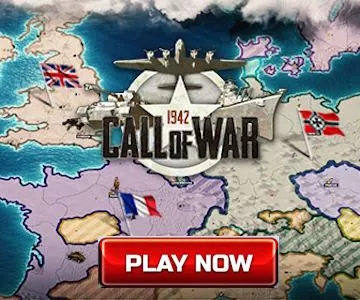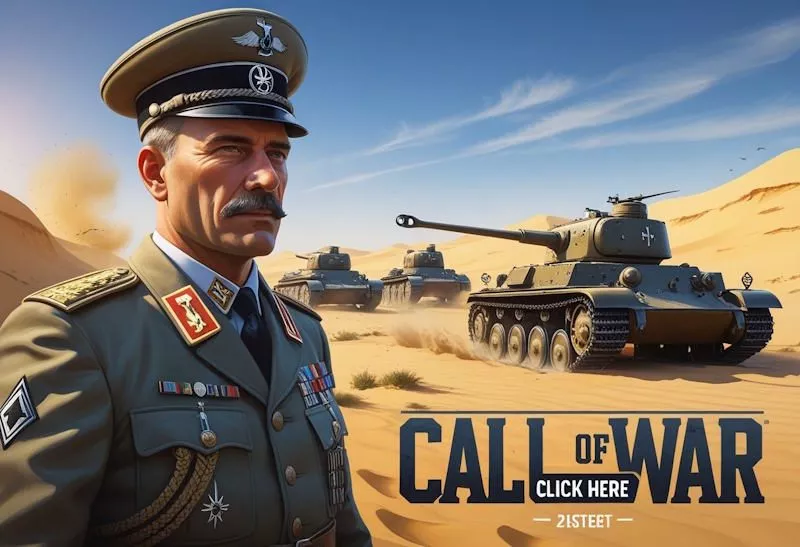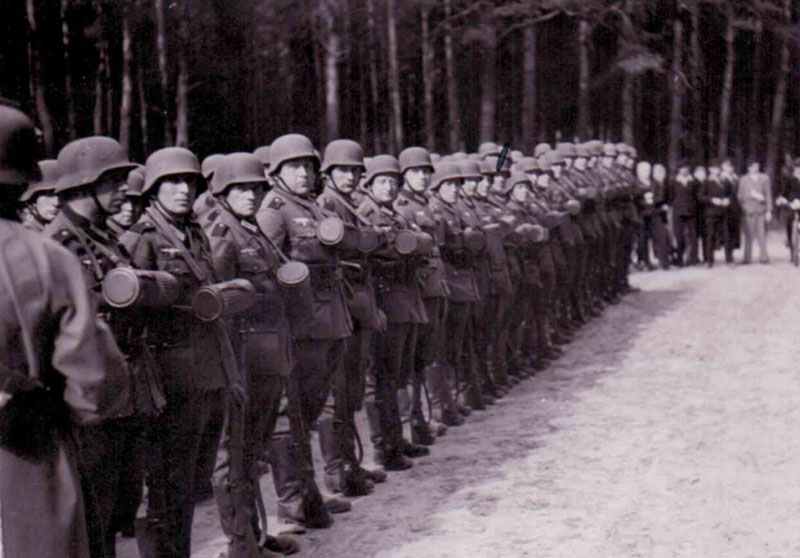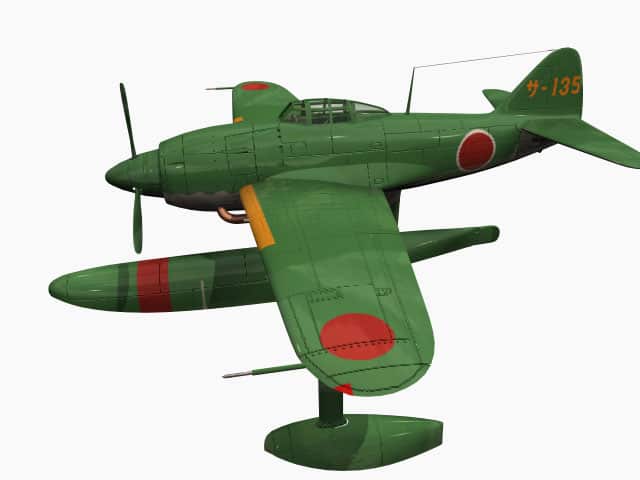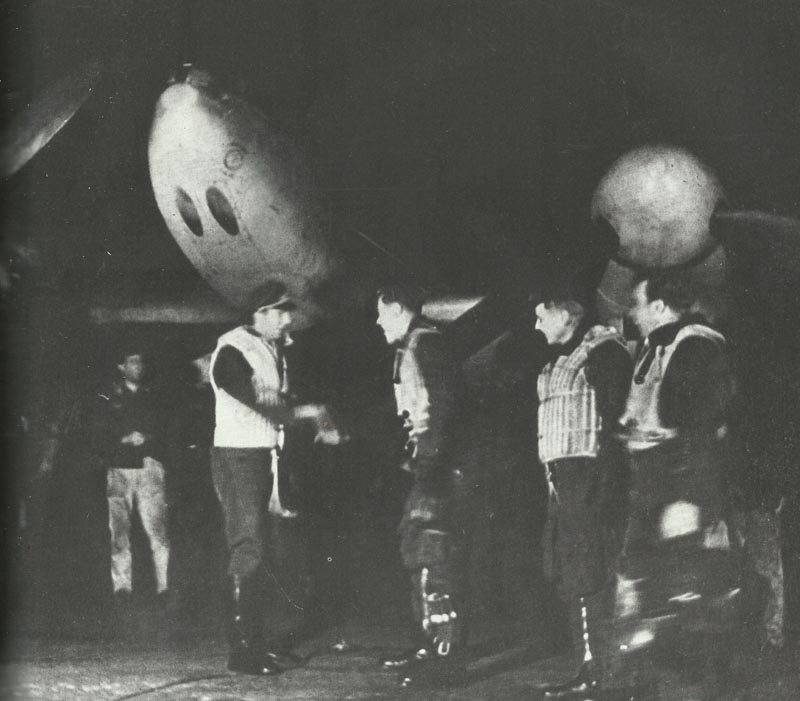Aircrafts and bases of the RAF squadrons on 13 August 1940, the Eagle Day. Number of squadrons, locations and aircraft equipment in Britain, Africa, Middle and Far East.
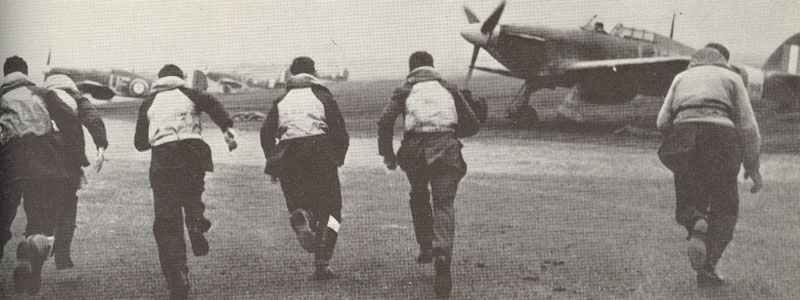
Organization of the RAF
Table of Contents
The first phase of the German plan for the invasion of England was to gain control of the air and so during the months of July and August 1940 the RAF prepared its forces for the inevitable battle against the Luftwaffe.
The main defence possessed by the British was RAF Fighter Command which was under the inspired leadership of Air Chief Marshal Sir Hugh Dowding. The country was divided into four large areas to be defend by fighter groups, the most important being 11 Group under the command of Air Vice-Marshal Keith Park. This Group covered London, the Home Counties and south-east England, the fighting areas of the Battle of Britain.
Underneath th Group was the sector (nine in 11 Group) which would control anything from two to five squadrons. In some sectors all the squadrons would be based on the one airfield, in others they would be spread out over as many as four airfields. A typical sector was Northolt which was organised as follows:
No. 1 Sqdn – 10 Hurricanes;
No. 275 Sqdn – 13 Hurricanes;
No. 604 Sqdn – 10 Blenheim heavy fighters;
No. 609 Sqdn – 15 Spitfires.
By the end of July the RAF had 530 Hurricanes and Spitfires fighter aircraft ready for combat out of a total of just over 600, with another 289 fighters in reserve. Before Eagle Day, on 11 August 1940, there were 960 fighter planes ready for combat. Of these 704 were Hawker Hurricanes and Supermarine Spitfires (plus 289 reserve planes). Eagle Day (‘Adlertag’) on 13 August 1940 was the launching of the great Luftwaffe offensive planned to destroy RAF Fighter Command in four days.
The RAF had considerable advantages over the Luftwaffe, the chief of these being a flexible command structure which ensured resources were not wasted; an integrated radar system which usually enabled RAF fighter pilots to intercept the German bomber squadrons; and the advantage of fighting over home territory.
The margin of the RAF’s victory over the German Air Force was slim but it was sufficient to deter the Wehrmacht from seriously contemplating an invasion of Britain.
The Eagle’s Day
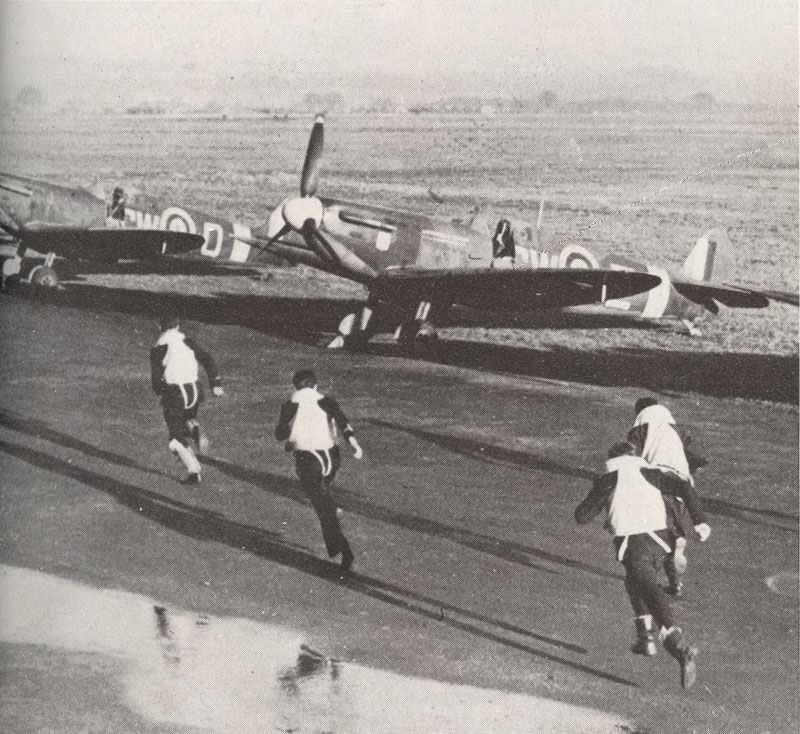
Adlertag (Eagle’s Day) – 13 August 1940
Adlertag, or ‘Eagle’s Day’, was the code name given by the German Luftwaffe to the planned decisive assault on Britain during the Battle of Britain in World War II. It took place on 13 August 1940, and was intended to cripple the Royal Air Force (RAF) Fighter Command, paving the way for Operation Sea Lion, the German invasion of Britain.
Background
– After the fall of France in June 1940, Germany turned its attention to Britain.
– Hitler believed that before an invasion could succeed, the RAF had to be destroyed to give the Luftwaffe air superiority over southern England.
– Reichsmarschall Hermann Göring ordered a massive coordinated attack, which was codenamed ‘Adlertag’.
The Plan
– Hundreds of German aircraft — bombers escorted by fighters — were to launch waves of attacks on RAF airfields, radar stations, and aircraft factories.
– The Luftwaffe believed that a concentrated offensive could overwhelm Fighter Command in just a few days.
What Happened
– Poor weather delayed and disrupted the German attacks.
– Radar and intelligence allowed the RAF to anticipate many of the raids.
– Though the Luftwaffe inflicted damage on airfields and infrastructure, the RAF fought back fiercely.
– Losses were heavy on both sides: the Luftwaffe lost around 47 aircraft, while the RAF lost about 13 fighters that day.
Significance
– Adlertag was meant to be the beginning of the end for the RAF, but instead it showed that Britain’s defenses were resilient.
– The day marked the escalation of the Battle of Britain, which continued through the summer and autumn of 1940.
– Ultimately, the RAF’s survival forced Hitler to postpone and eventually cancel Operation Sea Lion.
Legacy
Adlertag is remembered as a turning point in the air war over Europe. It underscored the importance of radar, intelligence, and the determination of RAF pilots — the “Few” immortalized by Winston Churchill.
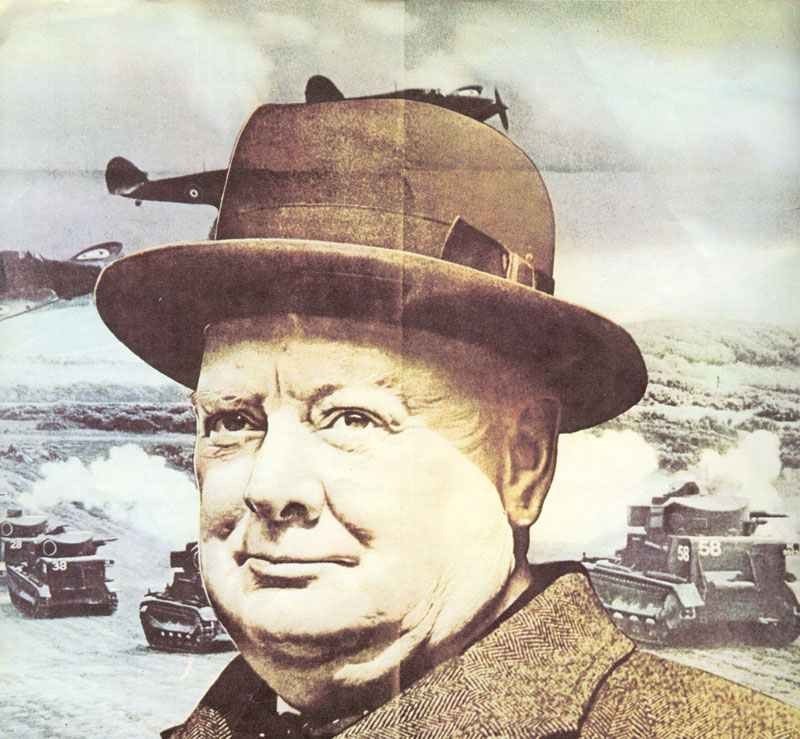
Active RAF Squadrons on Eagle Day (13 August 1940)
Sqn | Base | Planes | Sqn | Base | Planes |
|---|---|---|---|---|---|
1 | Northolt | 2 | Hatfield | Lysander I, II | |
3 | Wick | Hurricane I | 4 | Linton-on-Ouse | Lysander I, II |
5 | Lahore (India) | Hart | 6 | Ramleh (Palestine) | Lysander I, II |
7 | Leeming | Stirling I | 8 | Khormaskar (Aden) | Vincent, Blenheim I |
9 | Honington | Wellington IC | 10 | Leeming | Whitley V |
11 | Sheikh Othman (Aden) | Blenheim I | 12 | Eastchurch | Battle |
13 | Hooton Park | Lysander I, II | 14 | Port Sudan (Sudan) | Wellesley |
15 | Bourn | Blenheim IV | 16 | Okehampton (ab 14.Aug. Weston Zoyland) | Lysander II |
17 | Debden (19 Aug. Tangmere) | Hurricane I | 18 | West Raynham | Blenheim IV |
19 | Fowlmere | Spitfire I | 20 | Kohat (India) | Audax |
21 | Lossiemouth | Bleinheim IV | 22 | North Coates | Beaufort I, II |
23 | Collyweston | Blenheim IF | 24 | Hendon | various communication types |
25 | Martlesham Heath | Blenheim IF | 26 | West Malling | Lysander I, II |
27 | Risalpur (India) | Wapiti IIA, Hart, Tiger Moth | 28 | Kohat (India) | Audax |
29 | Wellingore | Blenheim IF, Hurricane I | 30 | Ikingi Maryut(Egypt) | Blenheim I, IF |
31 | Peshawar (India) | Valentia | 32 | Biggin Hill | Hurricane I |
33 | Helwan (Egypten) | Gladiator | 34 | Tengah (Singapore) | Blenheim I |
35 | operational training unit | - | 36 | Seletar (Malayia) | Vildebeest III |
37 | Feltwell | Wellington IA | 38 | Marham | Wellington IA, IC |
39 | Sheikh Othman (Aden) | Blenheim I | 40 | Wyton | Blenheim IV |
41 | Catterick | Spitfire I | 42 | Wick | Beaufort I |
43 | Tangmere | Hurricane I | 44 | Waddington | Hampden I |
45 | Helwan (Egypt) | Blenheim I | 46 | Digby (18 Aug. Duxford) | Hurricane I |
47 | Chartago (Sudan) | Wellesley | 48 | Hooton Park | Anson I, Beaufort I |
49 | Scampton | Hampden I | 50 | Lindholme | Hampden I |
51 | Dishforth | Whitley V | 52 | operational training unit | - |
53 | Detling | Blenheim IV | 54 | Hornchurch | Spitfire I |
55 | Fuka (Egypt) | Blenheim I | 56 | North Weald | Hurricane I |
57 | Elgin | Blenheim IV | 58 | Linton-on-Ouse | Whitley V |
59 | Thorney Island | Blenheim IV | 60 | Ambala (India) | Blenheim I |
61 | Hemswell | Hampden I | 62 | Tengah (Singapore) | Blenheim I |
63 | operational training unit | - | 64 | Kenley (19 Aug. Leconfield) | Spitfire I |
65 | Hornchurch (28 Aug. Turnhouse) | Spitfire I | 66 | Coltishall | Spitfire I |
70 | Heliopolis (Egypt) | Valentia | 72 | Acklington (31 Aug. Biggin Hill) | Spitfire I |
73 | Church Fenton | Hurricane I | 74 | Hornchurch ( 14 Aug. Wittering) | Spitfire I |
75 | Feltwell (15 Aug. Mildenhall) | Wellington I, IA, IC | 77 | Driffield (28 Aug. Linton-on-Ouse) | Whitley V |
78 | Dishforth | Whitley V | 79 | Acklington (27 Aug. Biggin Hill) | Hurricane I |
80 | Amriya (Egypt) | Gladiator, Hurricane I | 81 | disbanded | - |
82 | Watton | Blenheim IV | 83 | Scampton | Hampden I |
84 | Shaibah (Iraq) | Blenheim I | 85 | Debden (19 Aug. Croydon) | Hurricane I |
87 | Exeter | Hurricane I | 88 | Sydenham | Battle |
92 | Pembrey | Spitfire I | 94 | Sheikh Othman (Aden) | Gladiator |
97 | disbanded | - | 98 | Kaldadarnes (Iceland) | Battle |
99 | Newmarket | Wellington I, IA, IC | 100 | Seletar (Singapore) | Vildebeest II, III |
101 | West Raynham | Blenheim IV | 102 | Driffield (25 Aug. Leeming) | Whitley V |
103 | Newton | Battle | 104 | operational training unit | - |
105 | Watton | Blenheim IV | 106 | Finningley | Hampden I |
107 | Wattisham | Blenheim IV | 108 | operational training unit | - |
110 | Wattisham | Blenheim IV | 111 | Croydon (19 Aug. Debden) | Hurricane I |
112 | Maaten Gerawla (Egypt) | Gladiator | 113 | Maaten Bagush (Egypt) | Blenheim IV |
114 | Horsham St.Faith (10 Aug. Oulton) | Blenheim IV | 115 | Marham | Wellington IA, IC |
139 | Horsham St.Faith | Blenheim IV | 141 | Prestwick (30 Aug. Turnhouse) | Defiant I |
142 | Eastchurch | Battle | 144 | Hemswell | Hampden I |
145 | Westhampnett (14 Aug. Drem) | Hurricane I | 148 | disbanded | - |
149 | Mildenhall | Wellington I, IA, IC | 150 | Newton | Battle |
151 | North Weald (29 Aug. Stapleford Tawney) | Hurricane I | 152 | Warmwell | Spitfire I |
185 | operational training unit | - | 201 | Sullon Voe (Shetland Is) | Sunderland I |
202 | Gibraltar | London II | 203 | Khormaksar (Aden) | Blenheim IV |
204 | Sullon Voe (Shetland Is) | Sunderland I | 205 | Seletar (Ceylon) | Singapore III |
206 | Bircham Newton | Hudson | 207 | operational training unit | - |
208 | Qasaba (Egypt) | Lysander I, II | 209 | Pembrock Dock | Lerwick I |
210 | Oban | Sunderland I | 211 | Qotafiya (Egypt) | Blenheim I |
212 | disbanded | - | 213 | Exeter | Hurricane I |
214 | Stradishall | Wellington I, IA, IC | 216 | Heliopolis (Egypt) | Valentia, Bombay |
217 | St.Eval | Anson, Beaufort I | 218 | Oakington | Blenheim IV |
219 | Catterick | Blenheim IF | 220 | Thornaby | Hudson |
222 | Kirton-in-Lindsey (29 Aug. Hornchurch) | Spitfire I | 223 | Summit (Sudan) | Wellesley |
224 | Leuchars | Hudson | 225 | Tilshead | Lysander |
226 | Sydenham (Northern Ireland) | Battle | 228 | Pembroke Dock | Sunderland I |
229 | Wittering | Hurricane I | 230 | Alexandria (Egypt) | Sunderland I |
231 | Newtownards | Lysander | 232 | Sumburgh | Hurricane I |
233 | Aldergrove | Hudson | 234 | Middle Wallop | Spitfire I |
235 | Bircham Newton | Blenheim IVF | 236 | St.Eval | Blenheim IVF |
237 | (Rhodesian) Nairobi (Kenia) | Hardy, Hart, Audax | 238 | Middle Wallop (14 Aug. St.Eval) | Hurricane I |
240 | Stranrear | Stranrear I | 242 | Coltishall | Hurricane I |
245 | Ballyhalbert | Hurricane I | 248 | Dyce | Blenheim IVF |
249 | Church Fenton (14 Aug. Boscombe Down) | Hurricane I | 252 | disbanded | - |
253 | Turnhouse (23 Aug. Prestwick) | Hurricane I | 254 | Dyce | Blenheim IV |
257 | Northolt (15 Aug. Debden) | Hurricane I | 261 | Hal Far (Malta) | Sea Gladiator, Hurricane I |
263 | Grangemouth | Hurricane I | 264 | Kirston-in-Lindesy (22 Aug. Hornchurch) | Defiant I |
266 | Eastleight (14 Aug. Hornchurch) | Spitfire I | 269 | Wick | Hudson I |
271 | (Transport) Doncaster Harrow | Ford 5, HP42 | 273 | China Bay (Ceylon) | Vildebeest III, Seal |
274 | Amriya (Egypt, operational 19 Aug.) | Gladiator, Hurricane I, MS 406, Potez 63 | 300 | (Polish) Bramcote (22 Aug. Swinderby) | Battke |
301 | (Polish) Bramcote (28 Aug. Swinderby) | Battle | 302 | (Polish) Leconfield | Hurricane I |
303 | (Polish) Northolt | Hurricane I | 304 | (Polish) Bramcote (operational 22 Aug.) | Battle |
305 | (Polish) Bramcote (operational 29 Aug.) | Battle | 306 | (Polish) Church Fenton (operational 28 Aug.) | Hurricane I |
311 | (Czech) Honington | Wellington IA, IC | 312 | (Czech) Duxford (operational 29 Aug.) | Hurricane I |
320 | (Dutch) Pembroke Dock | Fokker T-VIIIW, Anson | 321 | (Dutch) Carrew Cheriton | Anson I |
500 | Detling | Anson I | 501 | Gravesend | Hurricane I |
502 | Aldergrove | Anson I | 504 | Castletown | Hurricane I |
600 | Manston (22 Aug. Hornchurch) | Blenheim IF | 601 | Tangmere (19 Aug. Debden) | Hurricane I |
602 | Westhampnett | Spitfire I | 603 | Turnhouse (27 Aug. Hornchurch) | Spitfire I |
604 | Middle Wallop | Blenheim IF | 605 | Drem | Hurricane I |
607 | Usworth | Hurricane I | 608 | Thornaby | Anson I |
609 | Middle Wallop | Spitfire I | 610 | Biggin Hill | Spitfire I |
611 | Digby | Spitfire I, II, IIA | 612 | Dyce | Anson I |
613 | Netherhorpe | Lysander I, III | 614 | Grangemouth | Lysander I, II |
615 | Kenley (29 Aug. Prestwick) | Hurricane I | 616 | Leconfield (19 Aug. Kenley) | Spitfire I |
Note: Squadron Nos. 400 to 499 were squadrons of the Royal Canadian Air Force, Royal Australian Air Force and Royal New Zealand Air Force. Not all numbers were used and unfortunately there are no detailed information available.
Overview of RAF squadrons equipment and location
Plane | UK, Shetland Iss, Iceland | Egypt, Palestine, Iraq, Sudan, Aden, Kenya | Malta, Gibraltar | India, Malayia | Total |
|---|---|---|---|---|---|
34 | - | - | - | 34 | |
19 | - | - | - | 19 | |
Gladiator | - | 5 | 1 | - | 6 |
Blenheim IF, IVF | 9 | - | - | - | 9 |
Defiant | 2 | - | - | - | 2 |
Hart | - | 1 | - | 2 | 3 |
Vildebeest | - | - | - | 3 | 3 |
Wellesley | - | 7 | - | - | 7 |
Blenheim I | - | 7 | - | - | 7 |
Blenheim IV | 16 | 2 | - | - | 18 |
Battle | 11 | - | - | - | 11 |
Beaufort | 4 | - | - | - | 4 |
Whitley | 6 | - | - | - | 6 |
Hampden | 7 | - | - | - | 7 |
Wellington | 9 | - | - | - | 9 |
Stirling | 1 | - | - | 1 | |
Hudson | 6 | - | - | - | 6 |
Anson | 5 | - | - | - | 5 |
Lysander | 9 | 2 | - | - | 11 |
Audax | - | - | - | 2 | 2 |
Valentina | - | 2 | - | 1 | 3 |
Vincent | - | 1 | - | - | 1 |
London | - | - | 1 | - | 1 |
Singapore | - | - | - | 1 | 1 |
Lerwick | 1 | - | - | - | 1 |
Stranrear | 1 | - | - | - | 1 |
Sunderland | 4 | 1 | - | - | 5 |
Total | 144 | 24 | 2 | 9 | 179 |
The strength of RAF squadron was between 6 and 18 aircrafts.
References and literature
The Squadrons of the Royal Air Force (James J. Halley)
Luftkrieg (Piekalkiewicz)
The Armed Forces of World War II (Andrew Mollo)
Das große Buch der Luftkämpfe (Ian Parsons)



